The Cat’s Eye Nebula (NGC 6543) Is One Of The Best Known Planetary Nebulae In The Sky. Its More Familiar

The Cat’s Eye Nebula (NGC 6543) is one of the best known planetary nebulae in the sky. Its more familiar outlines are seen in the brighter central region of the nebula in this impressive wide-angle view. But the composite image combines many short and long exposures to also reveal an extremely faint outer halo. At an estimated distance of 3,000 light-years, the faint outer halo is over 5 light-years across. Planetary nebulae have long been appreciated as a final phase in the life of a sun-like star. More recently, some planetary nebulae are found to have halos like this one, likely formed of material shrugged off during earlier episodes in the star’s evolution. While the planetary nebula phase is thought to last for around 10,000 years, astronomers estimate the age of the outer filamentary portions of this halo to be 50,000 to 90,000 years. Visible on the left, some 50 million light-years beyond the watchful planetary nebula, lies spiral galaxy NGC 6552.
Object Names: Cat’s Eye Nebula, NGC 6543
Image Type: Astronomical
Credit: Josh Smith (Via Nasa)
Time And Space
More Posts from Evisno and Others









We’re Way Below Average! Astronomers Say Milky Way Resides In A Great Cosmic Void
“If there weren’t a large cosmic void that our Milky Way resided in, this tension between different ways of measuring the Hubble expansion rate would pose a big problem. Either there would be a systematic error affecting one of the methods of measuring it, or the Universe’s dark energy properties could be changing with time. But right now, all signs are pointing to a simple cosmic explanation that would resolve it all: we’re simply a bit below average when it comes to density.”
When you think of the Universe on the largest scales, you likely think of galaxies grouped and clustered together in huge, massive collections, separated by enormous cosmic voids. But there’s another kind of cluster-and-void out there: a very large volume of space that has its own galaxies, clusters and voids, but is simply higher or lower in density than average. If our galaxy resided near the center of one such region, we’d measure the expansion rate of the Universe to be higher-or-lower than average when we used nearby techniques. But if we measured the global expansion rate, such as via baryon acoustic oscillations or the fluctuations in the cosmic microwave background, we’d actually arrive at the true, average rate.
We’ve been seeing an important discrepancy for years, and yet the cause might simply be that the Milky Way lives in a large cosmic void. The data supports it, too! Get the story today.
Celebrating 17 Years of NASA’s ‘Little Earth Satellite That Could’
The satellite was little— the size of a small refrigerator; it was only supposed to last one year and constructed and operated on a shoestring budget — yet it persisted.
After 17 years of operation, more than 1,500 research papers generated and 180,000 images captured, one of NASA’s pathfinder Earth satellites for testing new satellite technologies and concepts comes to an end on March 30, 2017. The Earth Observing-1 (EO-1) satellite will be powered off on that date but will not enter Earth’s atmosphere until 2056.
“The Earth Observing-1 satellite is like The Little Engine That Could,” said Betsy Middleton, project scientist for the satellite at NASA’s Goddard Space Flight Center in Greenbelt, Maryland.
To celebrate the mission, we’re highlighting some of EO-1’s notable contributions to scientific research, spaceflight advancements and society.
Scientists Learn More About Earth in Fine Detail

This animation shifts between an image showing flooding that occurred at the Arkansas and Mississippi rivers on January 12, 2016, captured by ALI and the rivers at normal levels on February 14, 2015 taken by the Operational Land Imager on Landsat 8. Credit: NASA’s Earth Observatory
EO-1 carried the Advanced Land Imager that improved observations of forest cover, crops, coastal waters and small particles in the air known as aerosols. These improvements allowed researchers to identify smaller features on a local scale such as floods and landslides, which were especially useful for disaster support.

On the night of Sept. 6, 2014, EO-1’s Hyperion observed the ongoing eruption at Holuhraun, Iceland as shown in the above image. Partially covered by clouds, this scene shows the extent of the lava flows that had been erupting.
EO-1’s other key instrument Hyperion provided an even greater level of detail in measuring the chemical constituents of Earth’s surface— akin to going from a black and white television of the 1940s to the high-definition color televisions of today. Hyperion’s level of sophistication doesn’t just show that plants are present, but can actually differentiate between corn, sorghum and many other species and ecosystems. Scientists and forest managers used these data, for instance, to explore remote terrain or to take stock of smoke and other chemical constituents during volcanic eruptions, and how they change through time.
Crowdsourced Satellite Images of Disasters

EO-1 was one of the first satellites to capture the scene after the World Trade Center attacks (pictured above) and the flooding in New Orleans after Hurricane Katrina. EO-1 also observed the toxic sludge in western Hungary in October 2010 and a large methane leak in southern California in October 2015. All of these scenes, which EO-1 provided quick, high-quality satellite imagery of the event, were covered in major news outlets. All of these scenes were also captured because of user requests. EO-1 had the capability of being user-driven, meaning the public could submit a request to the team for where they wanted the satellite to gather data along its fixed orbits.

This image shows toxic sludge (red-orange streak) running west from an aluminum oxide plant in western Hungary after a wall broke allowing the sludge to spill from the factory on October 4, 2010. This image was taken by EO-1’s Advanced Land Imager on October 9, 2010. Credit: NASA’s Earth Observatory
Artificial Intelligence Enables More Efficient Satellite Collaboration

This image of volcanic activity on Antarctica’s Mount Erebus on May 7, 2004 was taken by EO-1’s Advanced Land Imager after sensing thermal emissions from the volcano. The satellite gave itself new orders to take another image several hours later. Credit: Earth Observatory
EO-1 was among the first satellites to be programmed with a form of artificial intelligence software, allowing the satellite to make decisions based on the data it collects. For instance, if a scientist commanded EO-1 to take a picture of an erupting volcano, the software could decide to automatically take a follow-up image the next time it passed overhead. The Autonomous Sciencecraft Experiment software was developed by NASA’s Jet Propulsion Laboratory in Pasadena, California, and was uploaded to EO-1 three years after it launched.

This image of Nassau Bahamas was taken by EO-1’s Advanced Land Imager on Oct 8, 2016, shortly after Hurricane Matthew hit. European, Japanese, Canadian, and Italian Space Agency members of the international coalition Committee on Earth Observation Satellites used their respective satellites to take images over the Caribbean islands and the U.S. Southeast coastline during Hurricane Matthew. Images were used to make flood maps in response to requests from disaster management agencies in Haiti, Dominican Republic, St. Martin, Bahamas, and the U.S. Federal Emergency Management Agency.
The artificial intelligence software also allows a group of satellites and ground sensors to communicate and coordinate with one another with no manual prompting. Called a “sensor web”, if a satellite viewed an interesting scene, it could alert other satellites on the network to collect data during their passes over the same area. Together, they more quickly observe and downlink data from the scene than waiting for human orders. NASA’s SensorWeb software reduces the wait time for data from weeks to days or hours, which is especially helpful for emergency responders.
Laying the Foundation for ‘Formation Flying’

This animation shows the Rodeo-Chediski fire on July 7, 2002, that were taken one minute apart by Landsat 7 (burned areas in red) and EO-1 (burned areas in purple). This precision formation flying allowed EO-1 to directly compare the data and performance from its land imager and the Landsat 7 ETM+. EO-1’s most important technology goal was to test ALI for future Landsat satellites, which was accomplished on Landsat 8. Credit: NASA’s Goddard Space Flight Center
EO-1 was a pioneer in precision “formation flying” that kept it orbiting Earth exactly one minute behind the Landsat 7 satellite, already in orbit. Before EO-1, no satellite had flown that close to another satellite in the same orbit. EO-1 used formation flying to do a side-by-side comparison of its onboard ALI with Landsat 7’s operational imager to compare the products from the two imagers. Today, many satellites that measure different characteristics of Earth, including the five satellites in NASA’s A Train, are positioned within seconds to minutes of one another to make observations on the surface near-simultaneously.
For more information on EO-1’s major accomplishments, visit: https://www.nasa.gov/feature/goddard/2017/celebrating-17-years-of-nasa-s-little-earth-satellite-that-could
Make sure to follow us on Tumblr for your regular dose of space: http://nasa.tumblr.com/.


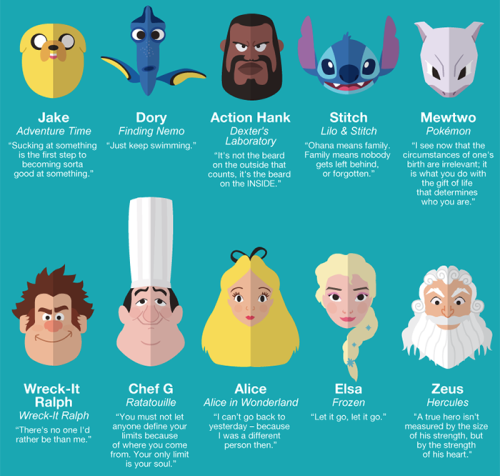
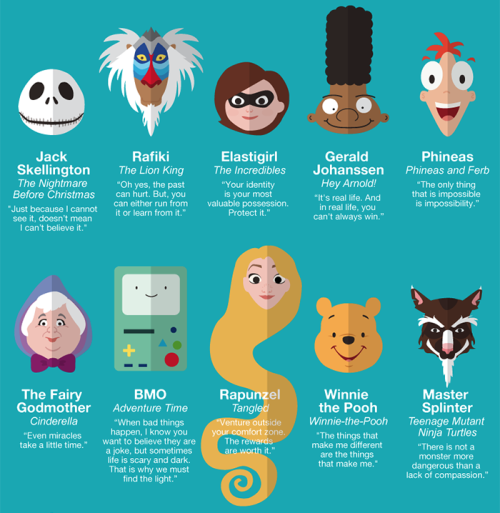
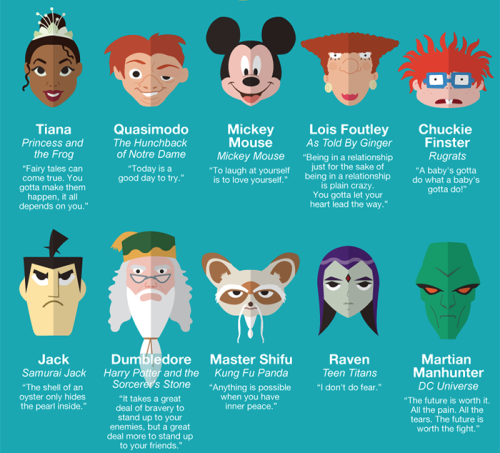

Life Advice from 50 Beloved Characters in Kid’s Entertainment by AAA State of Play -source-
Willst du immer weiter schweifen? Sieh, das Gute liegt so nah!
Do you want to roam further and further? Look, the good things are so close!
Johann Wolfgang von Goethe (1749 – 1832), German poet, dramatist, natural scientist, and statesman
(via thatswhywelovegermany)

Pitch Black: Cosmic Clumps Cast the Darkest Shadows
Astronomers have found cosmic clumps so dark, dense and dusty that they throw the deepest shadows ever recorded. Infrared observations from NASA’s Spitzer Space Telescope of these blackest-of-black regions paradoxically light the way to understanding how the brightest stars form.
The clumps represent the darkest portions of a huge, cosmic cloud of gas and dust located about 16,000 light-years away. A new study takes advantage of the shadows cast by these clumps to measure the cloud’s structure and mass.
Continue Reading
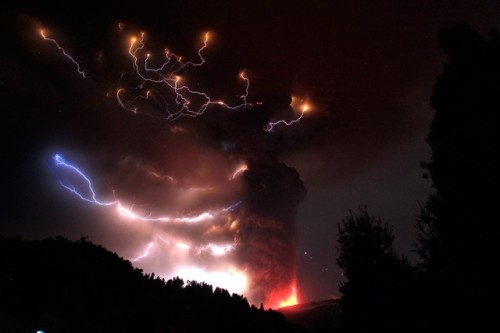

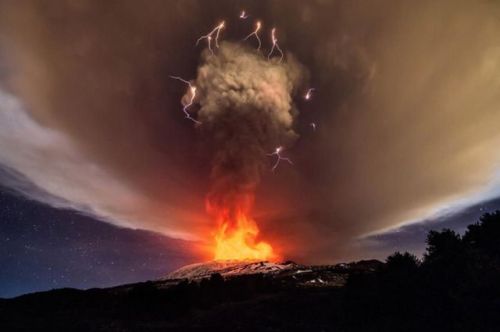
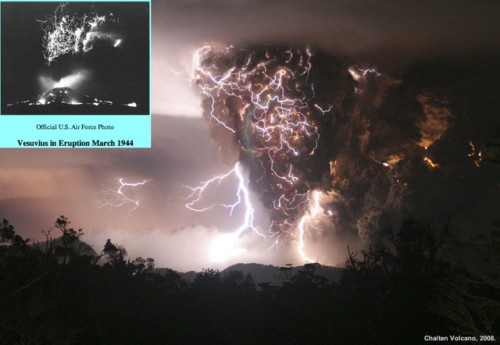

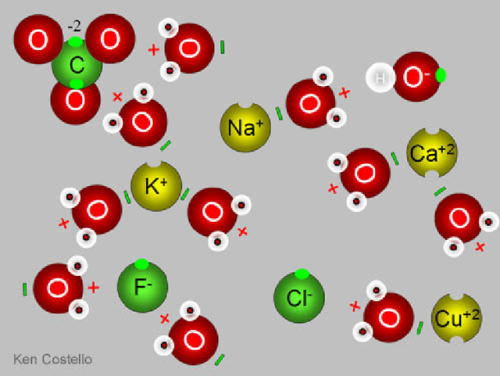

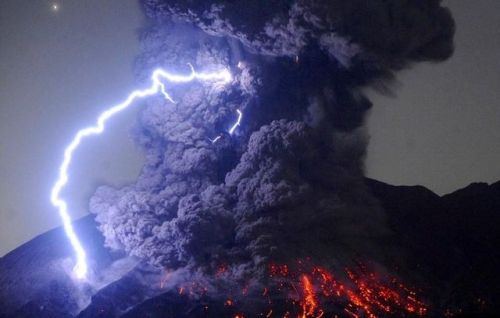
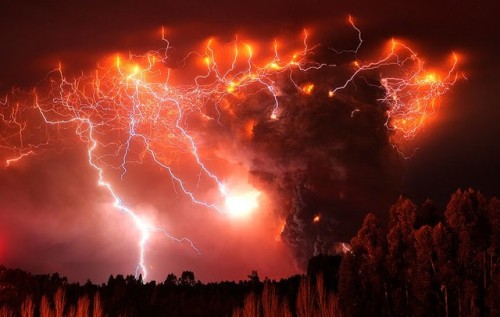
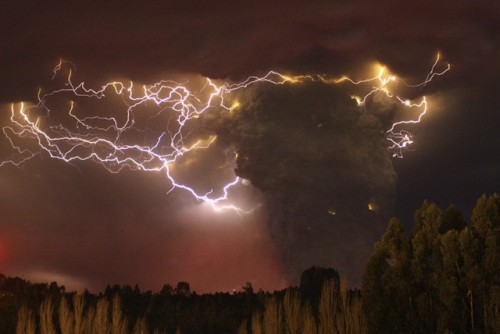
How Do Volcanoes Make Lightning?
“Volcanic lightning appears to occur most frequently around volcanoes with large ash plumes, particularly during active stages of the eruption, where flowing, molten lava creates the largest temperature gradients. The phenomena of lightning has been exquisitely recorded around a number of recent volcanic eruptions, including Iceland’s Eyjafjallajökull, Japan’s Sakurajima, Italy’s Mt. Etna, and Chile’s Puyehue, Calbuco and Chaiten volcanoes. But what you may not know is this phenomenon was not only captured during Mt. Vesuvius’ last eruption in 1944, but was accurately described nearly 2,000 years ago when it erupted all the way back in the year 79!”
Volcanoes are some of the most potentially destructive natural phenomena known to occur on our world. The most violent eruptions feature not only lava, but soot, ash, volatile gases, and even enormous chunks of rock hurled great distances. What you might not realize, however, is just how frequently these eruptions are accompanied by another spectacular show: volcanic lightning. Lightning isn’t only found in thunderstorms or other great electrical discharges between the clouds and the ground, but is produced in volcanic eruptions all throughout the world, and throughout history as well. After countless generations, where we wondered what could produce such an unusual but spectacular show, we’ve finally figured it out.
Come get the science behind how volcanoes make lightning, and enjoy some of the greatest photographs of this phenomena humanity’s ever taken!



All the times science fiction became fact
I don’t usually go for these really-big-ads-disguised-as-infographics (Really? Sci-fi ink & toner?), but this one was too cool to pass up.
Unfortunately, no hoverboards yet. But we’ve still got 15 months before time runs out on that one:
Bonus: Why are some science fiction authors so good at predicting the future? Check out this episode of It’s Okay To Be Smart where I talk all about that:
(via io9)

Quantum Tunneling
Quantum tunneling refers to the quantum mechanical phenomenon where a particle tunnels through a barrier that it classically could not surmount. This plays an essential role in several physical phenomena, such as the nuclear fusion that occurs in main sequence stars like the Sun. It has important applications to modern devices such as the tunnel diode, quantum computing, and the scanning tunneling microscope. The effect was predicted in the early 20th century and its acceptance as a general physical phenomenon came mid-century.
Tunneling is often explained using the Heisenberg uncertainty principle and the wave–particle duality of matter. Pure quantum mechanical concepts are central to the phenomenon, so quantum tunneling is one of the novel implications of quantum mechanics.
source

Starfish larvae, like other microorganisms, use tiny hair-like cilia to move the fluid around them. By beating these cilia in opposite directions on different parts of their bodies, the larvae create vortices, as seen in the flow visualization above. The starfish larvae don’t use these vortices for swimming – to swim, you’d want to push all the fluid in the same direction. Instead the vortices help the larvae feed. The more vortices they create, the more it stirs the fluid around them and draws in algae from far away. The larvae actually switch gears regularly, using few vortices when they want to swim and more when they want to eat. Check out the full video below to see the full explanation and more beautiful footage. (Image/video credit: W. Gilpin et al.)

NASA’s WISE findings poke hole in black hole ‘doughnut’ theory
A survey of more than 170,000 supermassive black holes, using NASA’s Wide-field Infrared Survey Explorer (WISE), has astronomers reexamining a decades-old theory about the varying appearances of these interstellar objects.
The unified theory of active, supermassive black holes, first developed in the late 1970s, was created to explain why black holes, though similar in nature, can look completely different. Some appear to be shrouded in dust, while others are exposed and easy to see.
The unified model answers this question by proposing that every black hole is surrounded by a dusty, doughnut-shaped structure called a torus. Depending on how these “doughnuts” are oriented in space, the black holes will take on various appearances. For example, if the doughnut is positioned so that we see it edge-on, the black hole is hidden from view. If the doughnut is observed from above or below, face-on, the black hole is clearly visible.
However, the new WISE results do not corroborate this theory. The researchers found evidence that something other than a doughnut structure may, in some circumstances, determine whether a black hole is visible or hidden. The team has not yet determined what this may be, but the results suggest the unified, or doughnut, model does not have all the answers.
Every galaxy has a massive black hole at its heart. The new study focuses on the “feeding” ones, called active, supermassive black holes, or active galactic nuclei. These black holes gorge on surrounding gas material that fuels their growth.
With the aid of computers, scientists were able to pick out more than 170,000 active supermassive black holes from the WISE data. They then measured the clustering of the galaxies containing both hidden and exposed black holes — the degree to which the objects clump together across the sky.
If the unified model was true, and the hidden black holes are simply blocked from view by doughnuts in the edge-on configuration, then researchers would expect them to cluster in the same way as the exposed ones. According to theory, since the doughnut structures would take on random orientations, the black holes should also be distributed randomly. It is like tossing a bunch of glazed doughnuts in the air — roughly the same percentage of doughnuts always will be positioned in the edge-on and face-on positions, regardless of whether they are tightly clumped or spread far apart.
But WISE found something totally unexpected. The results showed the galaxies with hidden black holes are more clumped together than those of the exposed black holes. If these findings are confirmed, scientists will have to adjust the unified model and come up with new ways to explain why some black holes appear hidden.
Image credit: NASA/JPL-Caltech
-
 evisno reblogged this · 8 years ago
evisno reblogged this · 8 years ago -
 novato-curioso-blog liked this · 8 years ago
novato-curioso-blog liked this · 8 years ago -
 blue-califas reblogged this · 8 years ago
blue-califas reblogged this · 8 years ago -
 blue-califas liked this · 8 years ago
blue-califas liked this · 8 years ago -
 ca1iban liked this · 8 years ago
ca1iban liked this · 8 years ago -
 moons-halo reblogged this · 8 years ago
moons-halo reblogged this · 8 years ago -
 youwillneverwalkcrazy liked this · 8 years ago
youwillneverwalkcrazy liked this · 8 years ago -
 kitty4915 liked this · 8 years ago
kitty4915 liked this · 8 years ago -
 thepriceofbeingawesome reblogged this · 8 years ago
thepriceofbeingawesome reblogged this · 8 years ago -
 sierra--dawn liked this · 8 years ago
sierra--dawn liked this · 8 years ago -
 mememachinethings reblogged this · 8 years ago
mememachinethings reblogged this · 8 years ago -
 asxkaaa reblogged this · 8 years ago
asxkaaa reblogged this · 8 years ago -
 asxkaaa liked this · 8 years ago
asxkaaa liked this · 8 years ago -
 leo-africanus reblogged this · 8 years ago
leo-africanus reblogged this · 8 years ago -
 lostinintrospection liked this · 8 years ago
lostinintrospection liked this · 8 years ago -
 cerebral-sexual reblogged this · 8 years ago
cerebral-sexual reblogged this · 8 years ago -
 resoundingstillness reblogged this · 8 years ago
resoundingstillness reblogged this · 8 years ago -
 resoundingstillness liked this · 8 years ago
resoundingstillness liked this · 8 years ago -
 dancingskeleton-wishingiwasghost reblogged this · 8 years ago
dancingskeleton-wishingiwasghost reblogged this · 8 years ago -
 womaninheritsearth reblogged this · 8 years ago
womaninheritsearth reblogged this · 8 years ago -
 lewshifer reblogged this · 8 years ago
lewshifer reblogged this · 8 years ago -
 humans-kill-everything liked this · 8 years ago
humans-kill-everything liked this · 8 years ago -
 whoknewyork liked this · 8 years ago
whoknewyork liked this · 8 years ago -
 mryaiwest reblogged this · 8 years ago
mryaiwest reblogged this · 8 years ago -
 delta--9 reblogged this · 8 years ago
delta--9 reblogged this · 8 years ago -
 delta--9 liked this · 8 years ago
delta--9 liked this · 8 years ago -
 asxp-q liked this · 8 years ago
asxp-q liked this · 8 years ago -
 skidrow55 reblogged this · 8 years ago
skidrow55 reblogged this · 8 years ago -
 skidrow55 liked this · 8 years ago
skidrow55 liked this · 8 years ago -
 cubanaj1-blog liked this · 8 years ago
cubanaj1-blog liked this · 8 years ago -
 dreadnaught11 liked this · 8 years ago
dreadnaught11 liked this · 8 years ago -
 lookslikeaduck liked this · 8 years ago
lookslikeaduck liked this · 8 years ago -
 thetimeandspaceblog reblogged this · 8 years ago
thetimeandspaceblog reblogged this · 8 years ago